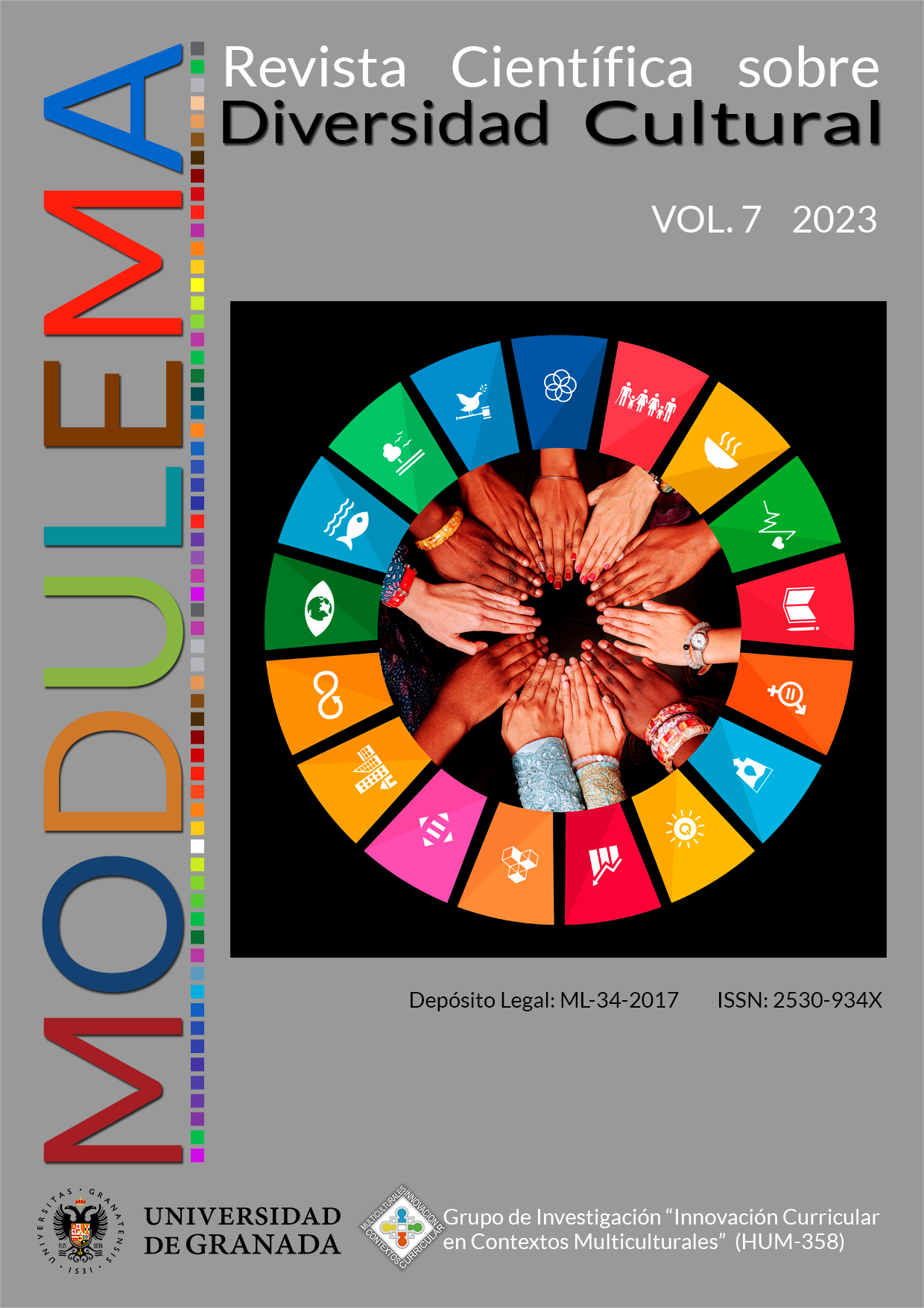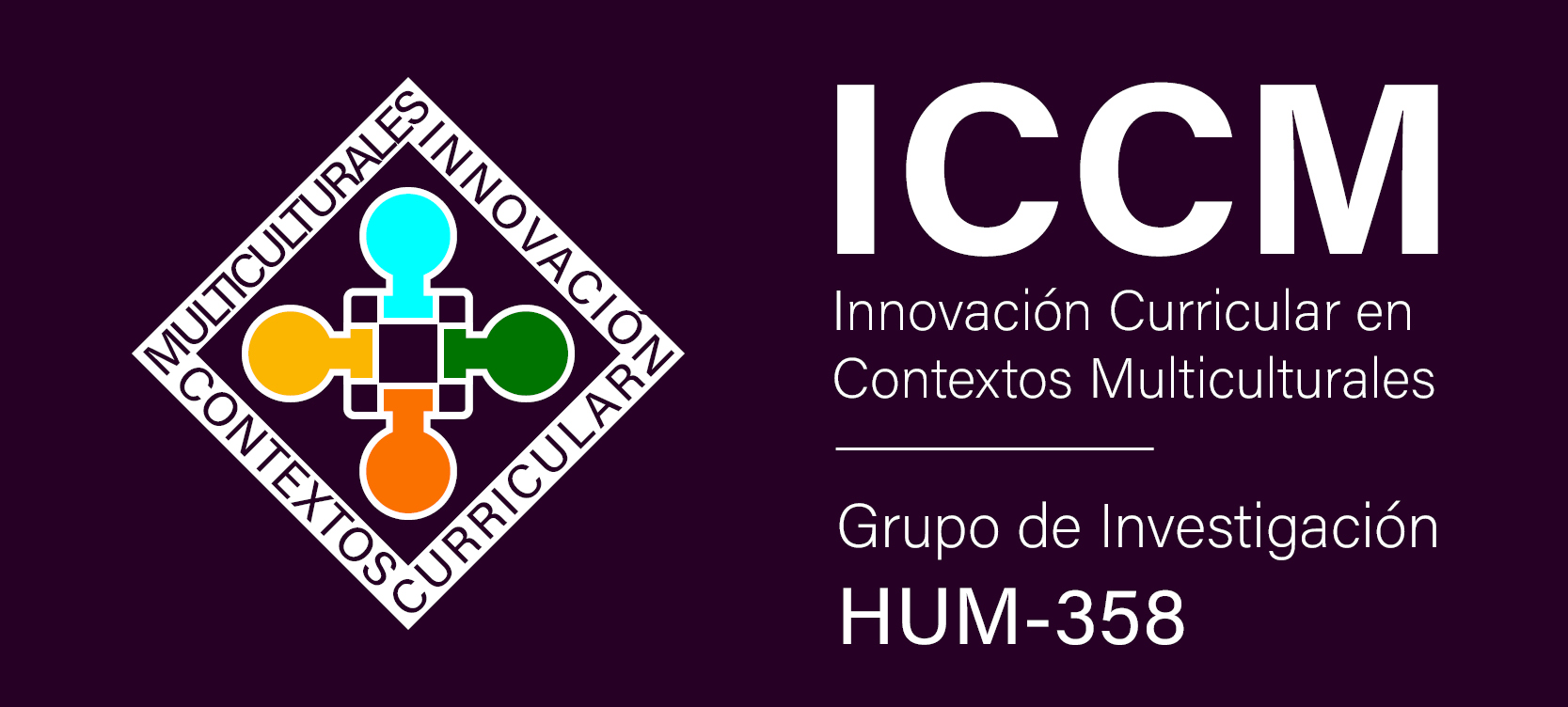ACCESS, TECHINAL SUPPORT, AND READING PRACTICE OF STUDENTS WITH HEARING IMPAIRMENT AT THREE ECUADORIAN UNIVERSITIES
DOI:
https://doi.org/10.30827/modulema.v7i.26984Keywords:
Accessibility, Pedagogical support, Disability, Inclusive education, Second language instructionAbstract
The access of students with sensory deficits to quality educational services persists as one of the challenges of higher education worldwide. This work aims to determine the level of access and technical support that three Ecuadorian universities offer to students with hearing impairment for the development of reading skills. The mixed approach of scientific research is used for data collection. The instrument used is the Inclusive Education Access Questionnaire created by Real (2011). The techniques used were: contextualized observation, in-depth interview, and survey. The results show that in the universities studied, limitations persist in providing technical support to students with sensory disabilities, reducing the development of reading skills in the group studied. The research concluded that to improve the reading skills of students with hearing impairment, the participating universities must install pedagogical/technical supports, design intervention routes, and strengthen the knowledge and motivation of the teaching staff to implement curricular adaptations and specific tutorials.
Downloads
References
Abdulrahman, H., Adebisi, F., Nwako, Z., & Walto, E. (2021). Revisiting (inclusive) education in the postcolony. Journal of the British Academy, 9(1), 47–75. https://doi.org/10.5871/jba/009s1.047 DOI: https://doi.org/10.5871/jba/009s1.047
Alegre, O., & Villar, L. (2019). Relación entre los Problemas Emocionales y el Desarrollo del Lenguaje en Niños y Adolescentes con Dificultades Auditivas. Revista Iberoamericana sobre Calidad, Eficacia y Cambio en Educación,17(1), 5-23. https://doi.org/10.15366/reice2019.17.1.001 DOI: https://doi.org/10.15366/reice2019.17.1.001
Alonzo, M.E. & Villafuerte, J. (2020). Adaptations for Teaching Children with Special Educational Needs in ESL Context. International Journal of Social Science Studies, 8(1), 121-134. https://doi.org/10.11114/ijsss.v8i1.4668 DOI: https://doi.org/10.11114/ijsss.v8i1.4668
Bravo, S., Bernarás Iturrioz, E., Garaigordobil Landazabal, M. & Villafuerte-Holguín, J. (2021). Situación de la Inclusión educativa e integración escolar de adolescentes con discapacidad motora de Manabí, Ecuador. Revista San Gregorio, 45(1), 47-58. https://revista.sangregorio.edu.ec/index.php/REVISTASANGREGORIO/article/view/1462/4-santos
Bravo, S., Bernarás Iturrioz, E., Garaigordobil Landazabal, M. & Villafuerte-Holguín, J. (2023). Características psicosociales del alumnado ecuatoriano con discapacidad motora. Telos: Revista de Estudios Interdisciplinarios en Ciencias Sociales, 25(1), 103-120. https://doi.org/10.36390/telos251.08 DOI: https://doi.org/10.36390/telos251.08
Cañizares, G. (2016). Alumnos con deficit auditivo: un nuevo método de enseñanza-aprendizaje. Narcea Editions.
Clavijo, R.G. & Bautista-Cerro, M. J. (2020). La educación inclusiva. Análisis y reflexiones en la educación superior ecuatoriana. Alteridad. Revista de Educación, 15(1), 113-127. DOI: https://doi.org/10.17163/alt.v15n1.2020.09. DOI: https://doi.org/10.17163/alt.v15n1.2020.09
Corral, K., Villafuerte, J. & Bravo, S. (2015). Realidad y perspectiva de la educación inclusiva de Ecuador. Percepciones de los actores directos al 2014. CIAIQ 2015. https://proceedings.ciaiq.org/index.php/ciaiq2015/article/view/320
Crisol Moya, E. (2019). Hacia una educación inclusiva para todos y nuevas contribuciones. Profesorado. Revista de Currículum y Formación del Profesorado, 23(1), 1-9. DOI: https://doi.org/10.30827/profesorado.v23i1.9155
Connor, C.M. & Zwolan, T.A. (2004). Examining multiple sources of influence on the reading comprehension skills of children who use cochlear implants. Journal of Speech Language and Hearing Research, 47(3), 509-526. https://doi.org/10.1044/1092-4388(2004/040). DOI: https://doi.org/10.1044/1092-4388(2004/040)
Fernández, J., Alonzo, S., & Brigas, C. (2017). Profesorado universitario y estudiantes con discapacidad. In M. Homrani, I. Ávalos, & D. Báez. Respuesta e Intervenciones Educativas en una sociedad diversa (pp. 998-1008). Comares.
Galván, E. (2019). La educación inclusiva, una inversión de futuro. Plena Inclusión 436, 2-3.
Garrad, T., Vlcek, S., & Page, A. (2022). The Importance of the Promotion of Evidence-Based Practice as a Reasonable Adjustment in Mainstream Education Settings for Students with Autism Spectrum Disorder. Australasian Journal of Special and Inclusive Education, 46(1), 101-112. https://doi.org/10.1017/jsi.2022.5 DOI: https://doi.org/10.1017/jsi.2022.5
Geers, A.E. & Hayes, H. (2011). Reading, writing, and phonological processing skills of adolescents with 10 or more years of cochlear implant experience. Ear and Hearing, 32(1), 49S-59S. https://doi.org/10.1097/AUD.0b013e3181fa41fa DOI: https://doi.org/10.1097/AUD.0b013e3181fa41fa
López-Vélez, A. (2018). La escuela inclusiva El derecho a la equidad y la excelencia educativa. Servicio Editorial de la Universidad del País Vasco.
López, I. & Valenzuela, G. (2015). Children and adolescents with special educational needs. Revista Médica Clínica Las Condes, 26(1), 42-51. https://doi.org/10.1016/j.rmclc.2015.02.004 DOI: https://doi.org/10.1016/j.rmclc.2015.02.004
Luzardo, L., Villafuerte, J., Bravo, S. & Corral, E. (2018). Compromiso o indiferencia: dicotomía ante la presencia de estudiantes con hipoacusia en una comunidad universitaria. In Authors. Educar desde la complejidad para la escuela del siglo XX (pp.145-165). Editorial ULEAM.
Macías, K, & Villafuerte, J. (2020). Teaching English Language in Ecuador: A Review from the Inclusive Educational Approach. Journal of Arts & Humanities, 9(2), 75-90. https://www.theartsjournal.org/index.php/site/article/view/1854/838
Mateus Cifuentes, L.E., Vallejo Moreno, D. M., Posada, D.O. & Durán, L.F. (2017). Percepción de las prácticas y de la cultura inclusiva en una comunidad escolar. Avances en Psicología Latinoamericana, 35(1), 177–191. https://doi.org/10.12804/revistas.urosario.edu.co/apl/a.4854 DOI: https://doi.org/10.12804/revistas.urosario.edu.co/apl/a.4854
Mateos, C., & Jiménez, R. (2018). Los niños con dificultades auditivas tienen más problemas de atención y rendimiento académico. SEORL.
Matos, M. & Fukuda, C. (2016). School Inclusion of People with Physical Disabilities: The Role of Social Interactions. Interpersona: An International Journal on Personal Relationships, 10, 22-33. http://doi.org/10.5964/ijpr.v10isupp1.239. DOI: https://doi.org/10.5964/ijpr.v10isupp1.239
McCreery, R., Walker, E., Spratford, M., Lewis, D. & Brennan, M. (2019). Auditory, Cognitive, and Linguistic Factors Predict Speech Recognition in Adverse Listening Conditions for Children With Hearing Loss. Frontiers in Neuroscience, 13 (1-10). https://doi.org/10.3389/fnins.2019.01093 DOI: https://doi.org/10.3389/fnins.2019.01093
Miñana Blasco, C. (2020). Educación inclusiva: Estado de la cuestión y balance analítico. Editorial Universidad Nacional de Colombia.
Moreira, C. & Villafuerte-Holguín, J.S. (2022). Diversidad en comunidades educativas: enseñanza de inglés como lengua extranjera a estudiantes con pérdida auditiva y déficit comunicacional. MODULEMA. Revista científica Sobre Diversidad Cultural, 6, 101–116. https://doi.org/10.30827/modulema.v6i.24575 DOI: https://doi.org/10.30827/modulema.v6i.24575
Nikolaraizi, M., Vekiri, I. & Easterbrook. S. (2013). Investigating Deaf Students’ Use of Visual Multimedia Resources in Reading Comprehension. American Annals of the Deaf, 157(5) 458–74. http://www.jstor.org/stable/26234861 DOI: https://doi.org/10.1353/aad.2013.0007
Ocampo, A. (2018). Competencia lectora y comprensión lectora desde una perspectiva de educación inclusiva. Entrevista a Andrés Calero. Revista Electrónica de Investigación Educativa, 20(3), 1-12. http://redie.uabc.mx/redie/article/view/2186
Pegalajar, M. & Colmenero, M. (2017). Actitudes y formación docente hacia la inclusión en Educación Secundaria Obligatoria. Revista electrónica de investigación educativa, 19(1), 84-97. https://doi.org/10.24320/redie.2017.19.1.765 DOI: https://doi.org/10.24320/redie.2017.19.1.765
Perilla Granados, J.S. (2018). La educación inclusiva: una estrategia de transformación social. Universidad Sergio Arboleda.
Pulgar, M.D. (2018). Las necesidades educativas especiales de los alumnos/as con deficiencia auditiva. Revista Internacional De Apoyo a La inclusión, Logopedia, Sociedad Y Multiculturalidad, 4(3). 1-20. https://doi.org/10.17561/riai.v4.n3.12 DOI: https://doi.org/10.17561/riai.v4.n3.12
Real, S. (2011). La situación de los estudiantes con discapacidad en la universidad de Oviedo. Thesis. Oviedo University. https://digibuo.uniovi.es/dspace/bitstream/handle/10651/3834/TD_Sara%20Real%20Castelao.pdf;jsessionid=2ED682EB2CA50A6DD06ED50176116DC7?sequence=5
Rodríguez Zambrano, A.D., Mera Medranda, M.N., Alcívar Pincay, G.A. & Cedeño Rengifo, R. (2020). Influencia de la Betatalasemia en el Rendimiento Escolar: una Historia de vida. Universidad y Sociedad, 12(2), 318-324.
Romo, P. (2019). La comprensión y la competencia lectora. Revista Anales, 1. 377, 163-164. https://revistadigital.uce.edu.ec/index.php/anales/article/view/2552
Rueda, I., Acosta, B. & Cueva, F. (2020). Las universidades y sus prácticas de vinculación con la sociedad. Educ. Soc., Campinas, 41, 1-20. https://doi.org/10.1590/ES.218154 DOI: https://doi.org/10.1590/es.218154
Saloviita, T. (2019). Explaining classroom teachers’ attitudes towards inclusive education. Support for Learning, 34(4), 432-442. https://doi.org/10.1111/1467-9604.12277 DOI: https://doi.org/10.1111/1467-9604.12277
Sánchez Salazar, T., Gómez Alcívar, V., Dicado Albán, M. & Campi Cevallos, C. (2019). Estrategias metodológicas inclusivas para niños con discapacidad auditiva en el nivel básico. Revista Dilemas Contemporáneos: Educación, Política y Valores, 2, 1-17. https://dilemascontemporaneoseducacionpoliticayvalores.com/index.php/dilemas/article/view/1135
Socher, M., Myxell, B., Ellis, R., Garskog, M., Hedstrom, I. & Wass, M. (2019). Pragmatic Language Skills: A Comparison of Children with Cochlear Implants and Children Without Hearing Loss. Frontier in Psychology, 10(1), 1-10. https://doi.org/10.3389/fpsyg.2019.02243 DOI: https://doi.org/10.3389/fpsyg.2019.02243
Velázquez, M.D. & Villafuerte, J. (2020). Recreational Games to Strengthen Equilibrium and Oral Expression of Children with Down Syndrome. Theory and Practice in Language Studies, 10(4), 360-371. http://dx.doi.org/10.17507/tpls.1004.03 DOI: https://doi.org/10.17507/tpls.1004.03
Villafuerte, J.S. & Pinoargote, J.C. (2020). Dispositivos electrónicos en prácticas de lectura y escritura: El caso de un estudiante con déficit visual. H2D|Revista De Humanidades Digitais, 2(1). https://doi.org/10.21814/h2d.2466 DOI: https://doi.org/10.21814/h2d.2466
Villafuerte-Holguín, J.S. (2022). Videojuegos en prácticas del inglés de menores con y sin trastorno por déficit de atención e hiperactividad. Revista Colombiana de Educación, 85(1), 79-100. https://doi.org/10.17227/rce.num85-12751 DOI: https://doi.org/10.17227/rce.num85-12751
Bello, J., Pacheco, E., Franco, O. & Villafuerte, J. (2023). Ansiedad y resiliencia laboral en procesos de acreditación. Profesorado, Revista De Currículum Y Formación Del Profesorado, 27(1), 229–253. https://doi.org/10.30827/profesorado.v27i1.21591 DOI: https://doi.org/10.30827/profesorado.v27i1.21591
Wass, M., Anmyr, L., Lyxell, B., Ostlund, E., Karltorp, E. & Lofkvist, U. (2019). Predictors of reading comprehension in children with cochlear implants. Frontier in Psychology, 10(1), 1-10. https://doi.org/10.3389/fpsyg.2019.02155 DOI: https://doi.org/10.3389/fpsyg.2019.02155
Worsfold, S., Mahon, M., Pimperton, H., Stevenson, J. & Kennedy, C. (2018). Predicting reading ability in teenagers who are deaf or hard of hearing: A longitudinal analysis of language and reading. Research in Developmental Disabilities, 77, 49-59. https://doi.org/10.1016/j.ridd.2018.04.007 DOI: https://doi.org/10.1016/j.ridd.2018.04.007
Downloads
Published
How to Cite
Issue
Section
License
Copyright (c) 2023 MODULEMA. Scientific Journal on Cultural Diversity

This work is licensed under a Creative Commons Attribution-NonCommercial-ShareAlike 4.0 International License.



















